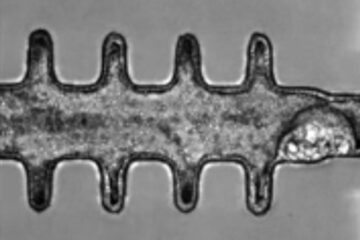New Oncolytic Virus Shows Improved Effectiveness In Preclinical Testing

Researchers at the Ohio State University Comprehensive Cancer Center – Arthur G. James Cancer Hospital and Richard J. Solove Research Institute (OSUCCC – James) are developing the oncolytic virus as a treatment for glioblastoma, the most common and deadly form of brain cancer (average survival: 15 months after diagnosis).
The new oncolytic virus, called 34.5ENVE, improved survival of mice with transplanted human glioblastoma tumors by 50 percent in a majority of cases compared with the previous-generation oncolytic virus.
The study was published online in the journal Molecular Therapy.
“These findings show the amazing therapeutic efficacy of this new oncolytic virus against four different glioblastoma models in animals,” says cancer researcher Dr. Balveen Kaur, associate professor of neurological surgery, and a member of the OSUCCC – James viral oncology research program.
The new oncolytic virus is engineered to replicate in cells that express the protein nestin. First identified as a marker for neuronal stem cells, nestin is also expressed in glioblastoma and other malignancies including gastrointestinal, pancreatic, prostate and breast cancer.
“We believe that nestin-driven oncolytic viruses will prove valuable for the treatment of many types of cancer,” Kaur says.
The new oncolytic virus also carries a gene to inhibit tumor blood-vessel growth. That gene, called Vstat120, was added to increase its anti-tumor effectiveness and prolong the virus’s presence within tumors.
In this study of eight animals with intracranial tumors, six lived longer than 80 days, and these were later found to be tumor free. By comparison, control mice survived a median of 20 days, and mice treated with a first-, a second-, and a third-generation oncolytic virus survived 33, 34 and 53 days, respectively.
“Magnetic resonance imaging and histological analyses revealed extensive tumor destruction in animals treated with 34.5 ENVE,” says Kaur, who is also chief of Ohio State’s Dardinger Laboratory of Neurosciences. “We hope that we can soon evaluate the safety of this virus in patients with cancer.”
Funding from the National Institute for Neurological Disorders and Stroke, National Cancer Institute and National Research Foundation of Korea supported this research.
Other researchers involved in this study were Ji Young Yoo, Amy Haseley, Anna Bratasz, E. Antonio Chiocca, Jianying Zhang and Kimerly Powell of The Ohio State University.
The Ohio State University Comprehensive Cancer Center – Arthur G. James Cancer Hospital and Richard J. Solove Research Institute (cancer.osu.edu) strives to create a cancer-free world by integrating scientific research with excellence in education and patient-centered care, a strategy that leads to better methods of prevention, detection and treatment. Ohio State is one of only 41 National Cancer Institute (NCI)-designated Comprehensive Cancer Centers and one of only seven centers funded by the NCI to conduct both phase I and phase II clinical trials. The NCI recently rated Ohio State’s cancer program as “exceptional,” the highest rating given by NCI survey teams. As the cancer program’s 210-bed adult patient-care component, The James is a “Top Hospital” as named by the Leapfrog Group and one of the top 20 cancer hospitals in the nation as ranked by U.S.News & World Report.
Contact: Darrell E. Ward, Medical Center Public Affairs and Media Relations,
614-293-3737, or Darrell.Ward@osumc.edu
Media Contact
All latest news from the category: Life Sciences and Chemistry
Articles and reports from the Life Sciences and chemistry area deal with applied and basic research into modern biology, chemistry and human medicine.
Valuable information can be found on a range of life sciences fields including bacteriology, biochemistry, bionics, bioinformatics, biophysics, biotechnology, genetics, geobotany, human biology, marine biology, microbiology, molecular biology, cellular biology, zoology, bioinorganic chemistry, microchemistry and environmental chemistry.
Newest articles

Solving the riddle of the sphingolipids in coronary artery disease
Weill Cornell Medicine investigators have uncovered a way to unleash in blood vessels the protective effects of a type of fat-related molecule known as a sphingolipid, suggesting a promising new…

Rocks with the oldest evidence yet of Earth’s magnetic field
The 3.7 billion-year-old rocks may extend the magnetic field’s age by 200 million years. Geologists at MIT and Oxford University have uncovered ancient rocks in Greenland that bear the oldest…

Mini-colons revolutionize colorectal cancer research
As our battle against cancer rages on, the quest for more sophisticated and realistic models to study tumor development has never been more critical. Until now, research has relied on…





















